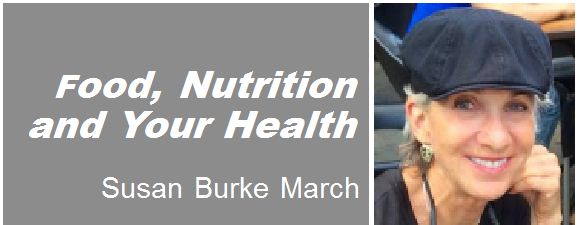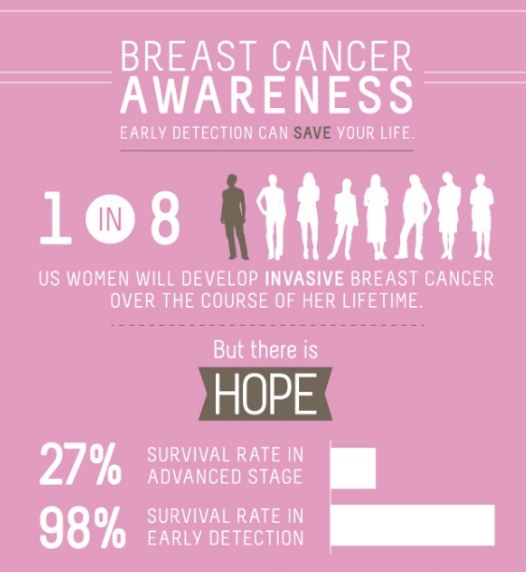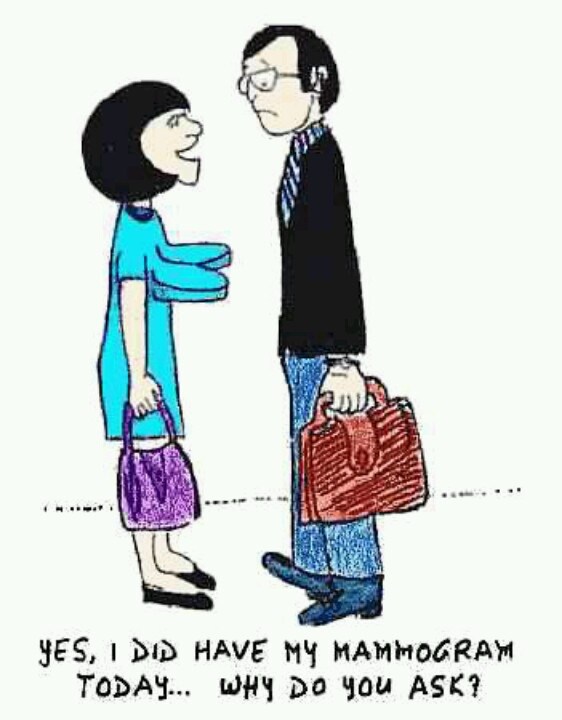Fighting breast cancer: What you can do to lower your risk
October is Breast Cancer Awareness Month. This is an annual international health campaign organized by major breast cancer organizations, with a mission to increase awareness and to raise funds for breast cancer research into the cause, prevention, diagnosis, treatment, and cure.
 According to the World Cancer Research Fund International, breast cancer is the most common cancer in women worldwide, with nearly 1.7 million cases diagnosed in 2012. Breast cancer is the second leading cause of cancer death, behind lung cancer.
According to the World Cancer Research Fund International, breast cancer is the most common cancer in women worldwide, with nearly 1.7 million cases diagnosed in 2012. Breast cancer is the second leading cause of cancer death, behind lung cancer.
More than 12% of women born in the U.S. today will develop breast cancer at some time during their lives. That means a woman born today will have a 1 in 8 chance of being diagnosed. In Ecuador, the annual mortality rate from breast cancer has increased by 42.9% since 1990, and is the third leading  cause of death among women, with the highest incidence in women over 55 years.
cause of death among women, with the highest incidence in women over 55 years.
There are identifiable risk factors for breast cancer, some you can change, and some you cannot.
What You Cannot Change
- Sex: Most importantly, just being a woman is a significant risk factor, with less than 1% of all new breast cancers in men. Walter Willet, of the Harvard School of Public Health, was interviewed for Nutrition Action and said, “Breast cancer risk is related in part to the number of menstrual cycles a woman has … the cycles make the breast tissues multiply, and the more that cells multiply over a lifetime, the higher the risk.” Early menarche and late menopause raise the risk.
- Age: Two-thirds of invasive breast cancers are found in women 55 or older.
- Genes: You can’t change your family history, and knowing it can be advantageous in terms of screening. According to Cancer.gov, mutations in the BRCA1 or BRCA2 genes can increase the risk for breast and ovarian cancer, among other cancers. However, they are rare, and health experts only recommend MRI testing if the person’s individual or family history indicates risk. Read more here about risk factors and screening.

- Age at menarche: Women who began menstruating before age 12 have a higher risk of breast cancer, and women continuing to have their periods until age 55 or older are at increased risk. A study in Cancer Epidemiology shows that breast cancer mortality has been increasing in Central and South America in the last few decades, and researchers warn that a decline in age at menarche, in Ecuador as well as other Latin American countries including Argentina, Brazil, Chile, and Colombia, is a major risk factor for breast cancer. Scientists link this phenomenon to the unhealthy aspects of the more prevalent Western diet, decreased physical activity, and resulting obesity.
- Personal history: if you’ve had breast cancer, you have 3-4 times higher risk of developing a different cancer in the same or other breast.
What You CAN Change!
- Your lifestyle. Maintain a healthy weight. Overweight, postmenopausal women are at higher risk than those who maintain a healthy weight for their height. Extra pounds promote cancer risk because fat cells store estrogen, and research shows that 80% of breast tumors are hormone-receptor positive. Also, obesity is linked to higher insulin levels, which may also fuel tumors. Where you carry your weight can influence risk — those who carry more belly fat may have a bigger risk compared to “pears” who carry weight on their hips and thighs. Moms and Dads can help keep their children healthy by staying active with them, by demonstrating healthy eating habits and avoiding excess sugar, especially sugary beverages.
- Smoking — the number one cause of lung cancer is also linked to breast cancer, especially among women who start before they have their first child. In the U.S., tobacco use is responsible for 1 in 5 deaths, and 50% of all smokers end up dying from a tobacco-related disease.
- Dr. Willet says, “Alcohol is related to both premenopausal and
 postmenopausal breast cancer … the more you drink, the higher your risk.” He’s especially concerned with teen drinking because the research suggests the earlier a girl starts to drink regularly, the bigger the risk — because alcohol raises estrogen levels. The American Cancer Society also reports that women who drink regularly and don’t get enough folate in their diet are at increased risk for breast cancer.
postmenopausal breast cancer … the more you drink, the higher your risk.” He’s especially concerned with teen drinking because the research suggests the earlier a girl starts to drink regularly, the bigger the risk — because alcohol raises estrogen levels. The American Cancer Society also reports that women who drink regularly and don’t get enough folate in their diet are at increased risk for breast cancer. - Exercise! Research shows that women who exercise regularly at a moderate or intense level, for 4 – 7 hours per week, are less likely to get breast cancer. That’s about an hour a day. Make it fun! Dance, rumba, salsa, walk, jog, bike, swim. Take a class that combines strength training with balance and flexibility. It’s worth it.
- Vitamin D. Besides necessary for absorption of calcium and bone health, vitamin D is an immunity-boosting vitamin, produced in your skin upon exposure to sunlight. Research suggests that low levels of vitamin D may contribute to higher risk for breast cancer. Only small amounts are available in foods, but before supplementing, it’s a good idea to get tested. Read my column about vitamin D here.
- Make your diet a live it! As reported in NBC Health News, research shows that women who ate the most inflammatory diet — heavy in red meat, sodas, sweet foods and white flour — were up to a third more likely to develop breast cancer in their 20s, 30s or 40s compared to women who consumed a more plant-based diets of green vegetables and whole grains. This is an associative stud and does not show that eating poorly as a teen causes breast cancer, but the researchers emphasize that food and diet is a factor that we all can control, and can do so deliciously.
According to the American Cancer Society, breast cancer death rates in the U.S. have been steady in women under age 50, but have decreased in older women. Why? Screening! Screening and increased awareness have increased ability for early diagnosis and treatments.
Ecuador’s Ministry of Health recently launched a campaign on breast cancer prevention aimed at raising awareness of the risks and importance of early detection to improve the outcome and survival. Launched on October 16th, mobile mammogram units are being deployed throughout Ecuador to test women. The Ministry of Public Health has a national strategy for cancer prevention and treatment, and reports that in the past five years, cases detected increased by 30%, and that nearly 40% of cancer cases could be prevented by modifying risk factors, including obesity, increasing fruit and vegetable consumption, increasing physical activity, and reducing alcohol and tobacco consumption.
I reached out to Dr. Gayle L. Abramson, board-certified radiologist and part-time Cuenca expat for her expert opinion. She advised, “For now, screening mammograms are our best option for detecting breast cancer, and for women who have been tested for the BRACA 1 or 2 gene mutation, an MRI of the breast could be indicated.” Dr. Abramson notes that the American College of Radiology favors annual mammograms starting at age 40, or earlier for those who may have higher risk factors.
BreastCancer.org recommends, “Breast self-exam (BSE), or regularly examining your breasts on your own, can be an important way to find a breast cancer early, when it’s more likely to be treated successfully. Not every cancer can be found this way, but it is a critical step you can and should take for yourself.” Read more here.
Sources
Andes. Agencia Pública de Noticias del Ecuador y Suramérica. Ecuador’s Ministry of Health launches campaign to prevent breast cancer. http://www.andes.info.ec/en/news/ecuadors-ministry-health-launches-campaign-prevent-breast-cancer.html
American Cancer Society. About Breast Cancer. https://www.cancer.org/cancer/breast-cancer/about/how-common-is-breast-cancer.html
American Cancer Society. Get Moving to Help Reduce Your Risk of Breast Cancer. https://www.cancer.org/latest-news/get-moving-to-help-reduce-your-risk-of-breast-cancer.html
BreastCancer.org. Breast Cancer Risk Factors. http://www.breastcancer.org/risk/factors
BreastCancer.org. Breast Self-Exam (BSE). http://www.breastcancer.org/symptoms/testing/types/self_exam
Latin America Current Events & News. Ecuador: Breast cancer leading cause of death for women. http://latinamericacurrentevents.com/ecuador-breast-cancer-leading-cause-of-death-for-women/27660/
National Cancer Institute. Breast Cancer. https://www.cancer.gov/types/breast/risk-fact-sheet
National Cancer Institute. BRCA1 and BRCA2: Cancer Risk and Genetic Testing. https://www.cancer.gov/about-cancer/causes-prevention/genetics/brca-fact-sheet
NBC News Health > Cancer. Bad Diet in Teen Years Could Raise Later Breast Cancer Risk. https://www.nbcnews.com/health/cancer/bad-diet-teen-years-could-raise-later-breast-cancer-risk-n727881
Nutrition Action Health Letter. Breast Cancer Defense. https://www.nutritionaction.com/daily/heart-and-disease-cat/breast-cancer-defense/
Cancer Epidemiology. Female breast cancer in Central and South America. http://www.sciencedirect.com/science/article/pii/S1877782116301242
World Health Organization. Cancer. http://www.who.int/cancer/detection/breastcancer/en/index1.html
The World Cancer Research Fund International. Breast cancer statistics. http://www.wcrf.org/int/cancer-facts-figures/data-specific-cancers/breast-cancer-statistics
Wikipedia.org. National Breast Cancer Awareness Month. https://en.wikipedia.org/wiki/National_Breast_Cancer_Awareness_Month
















